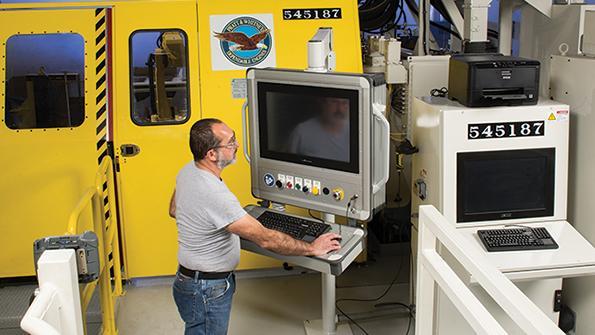コロナウィルスがMRO業界のオートメーションを加速する

新型コロナウィルス危機により、今の世界が持つ様々な弱点が明らかになったが、その中でも顕著なものはグローバルなサプライチェーンと「ジャストインタイム方式」のビジネスモデルだ。
長い間、これが在庫コストを削減し効率化を促進してきたが、効果的に機能するためには、異なる組織やインフラがお互い時計のような正確さで動く必要がある。
しかし、政府によるロックダウンや渡航規制が当たり前になった未来では、その歯車が噛み合わないケースが増えてくる。業界はそれに対応していく必要があるのだ。
解決策として考えられるのは、より短く地域レベルの規模になったサプライチェーンと、充分な在庫を持つことへの回帰だ。航空業界においても、このトレンドが広がるかもしれない。
その場合、航空機メンテナンス市場では他の面で効率化を進める必要がある。少なくとも、この危機が去った後では、より少ない顧客をめぐって競争することを強いられるようになるからだ。
この結果のひとつとして考えられるのは、オートメーションの促進だ(特にこれまで遅れていた分野において)。
コンサルティング会社・ローランドベルガーの試算によると、今後10年で航空機部品製造業におけるオートメーションは、現在の約30%から倍増する見込みだ。
しかし同社のパートナー・Holger Lipowsky氏によるコロナ危機以前の予想では、MRO業界におけるオートメーションが大きく進むことはなく、2030年になっても手作業が中心のままだと考えられていた。
ところが、今やMRO事業者が収益性の高い未来を切り開くためには、その予想を覆す必要が出てきた。そんなサプライチェーンの問題に対処するひとつの方法は3Dプリント技術を高めることだ。これは現在のところ、試作品や客室内の小物部品の製作にしか使われていない。
また、デジタル化をより早く進めることも、2つの点からさらに大きな利益をもたらすだろう。サプライチェーンの”見える化”の促進と、オートメーションの損益分岐点を下げることにつながるからだ。
以上は、Alex DerberがInside MRO誌いた記事です。 Inside MRO誌は、民間航空機MROセクターの最新のトレンドとテクノロジーを調査しています。毎月の各号には、重要なテクノロジー、ビジネス、および運用上の意思決定に必要な情報が記載されています。さらに、加入者は月に1回発行されるAviation Week&Space Technologyを受け取ることができます。Inside MRO誌をもっと知りたい場合、こちらをクリックして下さい。
One of many vulnerabilities exposed by the corona-crisis has been the fragility of globalized supply chains and the ‘just-in-time’ business model.
For while this cuts down inventory costs and promotes efficiency, to function effectively disparate organizations and infrastructure must interact with clockwork precision.
However, the gears may grind more frequently in the future if governments become more accustomed to imposing partial lockdowns and travel bans – so industry will have to adapt.
Solutions may include shorter, more localized supply lines and a return to larger inventories – trends that may occur in aviation, too.
The aircraft maintenance market will then need to find efficiencies in different areas, not least because they will probably find themselves competing for a smaller group of customers after the crisis.
One result of this may be to boost automation in a sector where its adoption has been slow.
Consultancy Roland Berger estimates that within the next decade the share of work performed by robots in aerostructures manufacturing will roughly double from its present level of 30%.
Before the crisis, however, Roland Berger partner Holger Lipowsky was less optimistic about the prospects for automation within MRO, which he thought would still be majority reliant on touch labor in 2030.
Now, though, MRO providers may have to challenge that prediction if they are to carve a profitable future. For example, one way to address supply chain issues could be to push their capabilities in 3D printing, which at present is used for little more than prototyping and minor cabin parts.
Faster digitization would reap even bigger gains, both to provide better supply chain visibility and because it tends to drive down the scale at which automation makes sense.